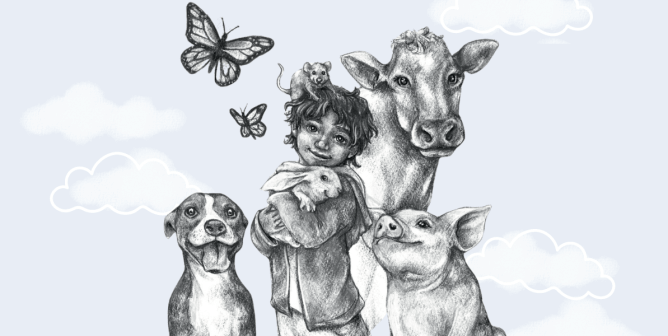Rabbits, Rodents, and Other Small Mammals Don’t Want to Be Your Class ‘Pets’
Small mammals (sometimes known as “pocket pets”)—such as rabbits, chinchillas, mice, rats, and other rodents—are commonly purchased to keep in classrooms, and it’s easy to understand the initial appeal. They’re cute, furry, small, and misleadingly thought of as good “starter pets.” But in truth, these animals are not at all suited for life in a classroom and require extensive daily care—some as much as a cat or dog (or more!). When you consider their needs, instincts, and sleep cycles as well as the dangers they face by being kept in an unpredictable setting where many children can access them, it’s easy to see why it’s cruel and inappropriate to bring them into your classroom.
Let’s dismantle some myths about small mammals or “pocket pets”:
- The notion that small mammals such as rodents are good “starter pets” is completely false and extraordinarily dangerous to the animals. Small mammals—especially those that are commonly kept in classrooms—actually have very specific and often high-maintenance needs, many of which won’t realistically be met in a classroom. And keeping them in a small enclosure in a busy room full of children, where dozens of little hands have access to their whole bodies, is wrong. Sadly, PETA has come across numerous cases of neglect (intentional or otherwise) and other cruelty toward small mammals kept in classrooms—many of which ended in an animal’s death. (Read more about these cases below).
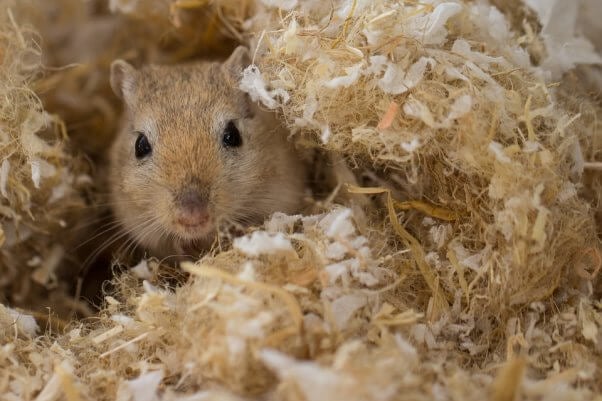
- The natural wake and sleep cycles of most “pocket pets” are completely incompatible with life in a bustling classroom. Almost all the animals you’ll read about below are either fully nocturnal (meaning they’re most active during the night) or crepuscular (which means they’re most active during dawn and dusk). Classrooms are brightly lit, noisy, and busy during their peak resting hours (which interferes with their natural sleep cycle) and empty during their active hours—allowing them no company or monitoring while they’re naturally most awake. Obviously, for these reasons alone, these animals are not at all suited for a classroom, where they would be deprived of companionship during their most naturally active hours and constantly disturbed by noise, bright lights, and handling during the hours that they would usually rest.
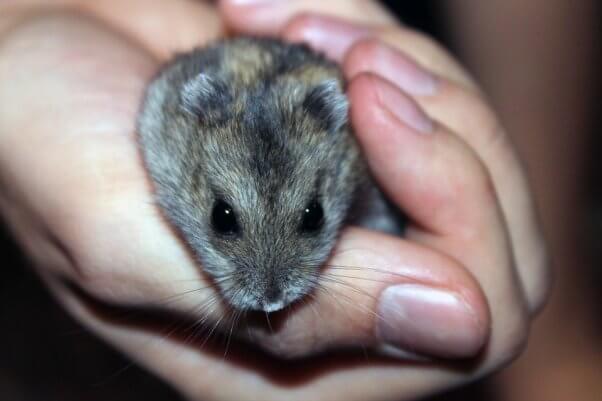
- And the animals aren’t the only ones at risk. Small mammals can be carriers of salmonella, pasteurella (which can cause a respiratory disease also known as “snuffles”), rabbit fur mites, giardia, and campylobacter—all of which can spread to humans. Furry mammals (and their bedding and hay) can trigger student allergies, and PETA has seen a number of cases in which schools have had to scramble to find new homes for class “pets” who were causing reactions in students.

Read on to learn about issues specific to certain animals commonly kept in classrooms.
Mice, Rats, and Hamsters
These animals are often misperceived as being “low maintenance” animal companions, a dangerous assumption that commonly results in neglect. Mice and rats are generally nocturnal, and hamsters are most active at dawn and dusk (a healthy hamster should be sleeping during the day)—making classroom life very disruptive to their natural cycles. The eyes of both mice and rats are very sensitive to bright light, and hamsters don’t like being awakened during the day.
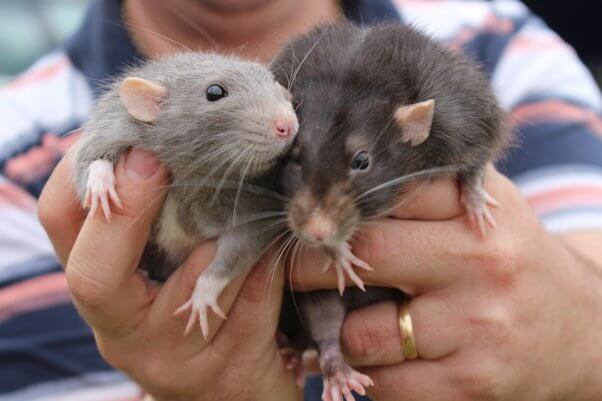
When in their natural habitat, hamsters prefer to be alone, so bonding with humans can be a challenge. Rats and mice are social but territorial animals. A lone, caged rat or mouse will languish, but two or more crowded together without adequate space may fight. For a single one of these animals, a 2-foot-square wire-mesh cage with a solid base would be the very minimum they would need—and note that keeping more than one in a space that size would likely lead to a deadly fight. Remember that like any animal, they may require veterinary care, and it can be as expensive to treat them as it is to treat cats and dogs. Furthermore, most domesticated rats carry Mycoplasma pulmonis, which can develop into active respiratory illness and pneumonia if it’s triggered by stress or illness.
Continuity is important for these animals, so moving the location of their enclosures often can be stressful. Transporting them to and from the classroom (which would be necessary during breaks and weekends) or having students take them home—regardless of how prepared the family is to care for them—would never be in the animals’ favor. Hamsters can be frightened easily, as they have relatively poor eyesight, and they may bite as a defense mechanism if caught off guard.
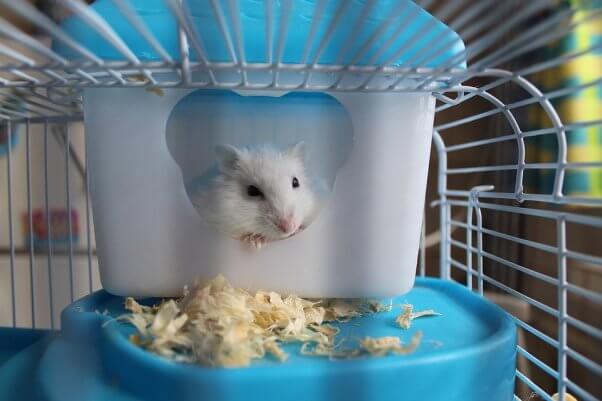
PETA has come across numerous cases in which rodents were given up once the school year was over or died or otherwise faced neglect while being “cared for” by students during school breaks. In particular, we’ve seen many cases of cruelty involving hamsters, such as incompatible animals being put together to fight in the classroom (resulting in injuries) and some being dangled by their hind legs by students and fed junk food. One hamster was tortured and killed during a school break-in by a group of juveniles, another was stolen from a school and never recovered, and yet another was allegedly fed crayons and poked with pencils by students (after which the hamster prematurely died). We came across one heartbreaking account written by a teacher who stated that her class hamster died alone in the classroom over Thanksgiving break and that she tossed him into a dumpster before the students arrived on the first day back. Class pets are often victims of neglect and callousness, and there is no place in modern education for treating animals like disposable objects and “teaching tools.”
Rabbits
Rabbits are sensitive and complex prey animals who require a specific routine and environment. They’re crepuscular, meaning they’re most active during dusk and dawn—neither of which align with the busiest times of the day in a classroom. In fact, classrooms are usually empty then, meaning the rabbits are deprived of socialization during their peak waking hours (and are disturbed by noise during their normal rest hours).
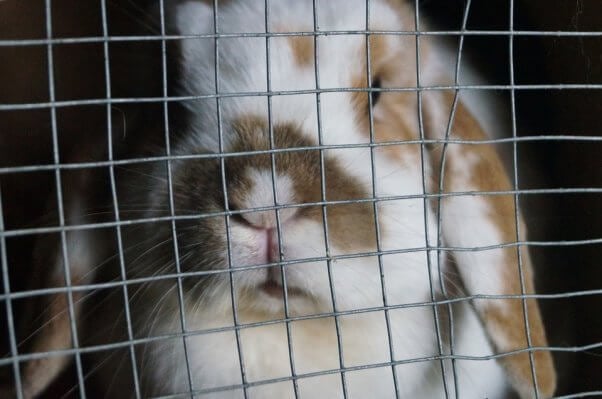
Rabbits require specific foods, stimulating environments with space to run and jump, and annual visits to veterinarians who have specialized knowledge of their species. They have social, gentle natures and individual personalities, and they need just as much attention as a dog or a cat—something that simply can’t be achieved if they’re relegated to a sad life as a classroom “pet.” They can even become withdrawn and depressed if they don’t receive enough love and companionship. It is widely agreed that rabbits are not suitable companions for young children—so keeping them in a classroom full of youngsters is simply irresponsible.
These animals also have extremely delicate respiratory and digestive systems, and any change in the balance of these systems can result in death if the animals aren’t treated properly and quickly. Because their digestive systems are so easily disrupted, being fed anything inappropriate could be lethal to them. They also cannot tolerate extreme heat or cold, so leaving them unmonitored in an empty (possibly unregulated) classroom puts their lives at risk.
Rabbits are instinctively nervous when lifted off the ground—which makes sense, as they evolved as prey animals and their instincts drive them accordingly. They dislike being carried around. Because of the delicate structure of their spines and the power of their leg muscles, they can actually break their own backbones when struggling. And the risk of injury runs both ways: Frightened rabbits can bite or scratch deeply when struggling to free themselves from someone’s grip.
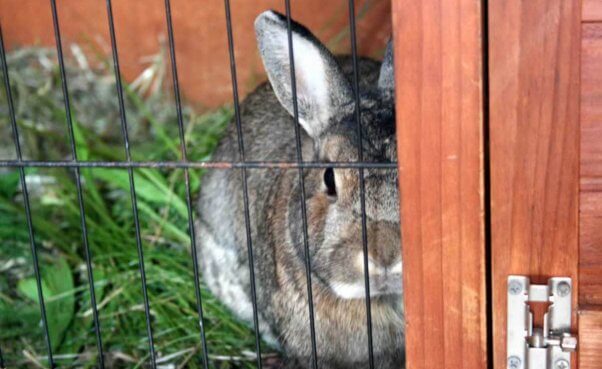
PETA has come across and received many reports of abuse and neglect toward rabbits kept in schools, including one who died of heatstroke in a car on the way to a teacher’s home after leaving the classroom, one who was killed by a dog after being sent home with a student, one who was allegedly kept with three others in a wire cage at a school and died after being chased during a weekend, one who died after his tail was apparently pulled off, and another who was decapitated and whose body parts were strewn about the campus.
For these reasons and others, many rabbit adoption agencies and animal shelters refuse to adopt out rabbits to those who would keep them as classroom “pets.” Treating them that way is unfair, unsafe, and unnecessary.
Guinea Pigs
There is a deadly misconception that guinea pigs make great “starter pets” for children or good classroom “pets”—when they are actually quite fragile animals who require a lot of care and prefer to live in pairs.
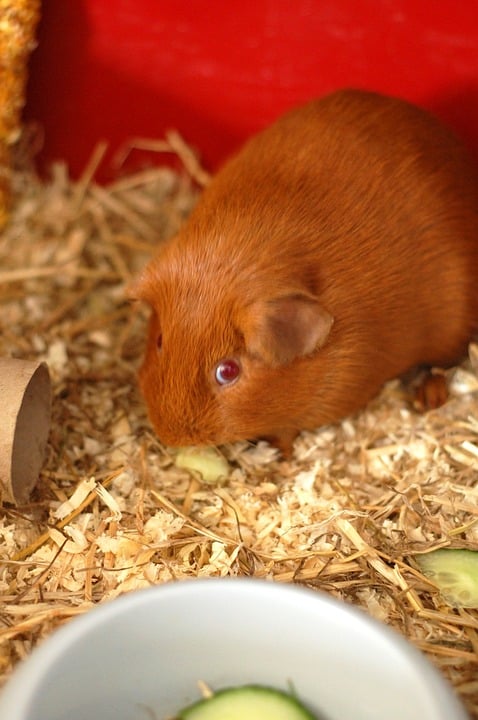
Guinea pigs need to see an exotic-animal veterinarian annually and require regular trimming of their nails. Daily enclosure cleanings are necessary (all substrate must be removed, then the floor must be wiped with an antiseptic cleaner and dried), as is daily exercise in a safe, securely enclosed room. Weekly combing and brushing is also essential, especially for long-haired breeds. Guardians should be prepared to care for a guinea pig for as long as seven years or more and to spend about $20 per week on food, hay, bedding, etc. Few classrooms truly have the time, space, and resources to provide these sensitive animals with what they need to thrive.
And that only scratches the surface of their basic needs. Cases of neglect and abuse in classrooms that we’ve seen include a guinea pig who was being kept in a kindergarten classroom and was killed and buried in the playground, one who died of shock, and another who died prematurely (likely because the teacher used toxic cedar wood chips).
Gerbils
Gerbils, like some of the animals previously mentioned, are often misperceived as being “low maintenance” animal companions. They are mostly nocturnal animals and do not like to be alone—they live in families of up to 20 members in their natural habitat. When housed in a solitary environment, they often become depressed and listless. If they’re kept in temperatures that are too low, they can go into hibernation.
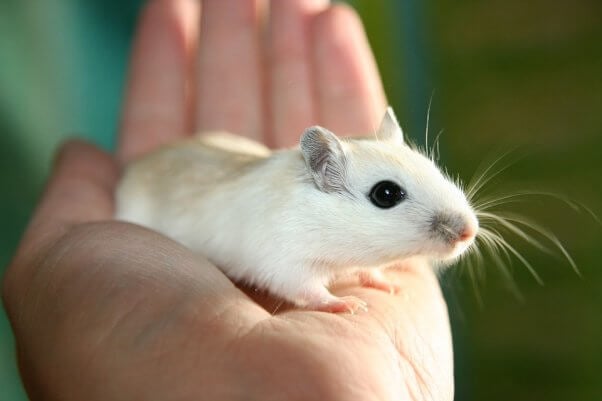
When gerbils become stressed or are forced to live in a dirty cage (both realistic possibilities in a classroom), they are at greater risk for “wet tail,” which is the slang term for a life-threatening disease. A head tilt or lack of balance, a runny nose, watery eyes, diarrhea, and scabs on the ears, face, or feet are all signs that a gerbil is sick and requires immediate attention. Like any other rodent, these animals can carry rabies and other diseases that are transmissible to humans—and they are known to bite.
PETA has come across egregious cases of cruelty toward classroom gerbils, including nine who died after they were deprived of food and water for more than two weeks at a high school, one who was killed by a student who became upset, one who was stepped on and injured while at home with a student and then died after being sat on, and another who was sent home with a student, only to sustain a broken back and die after being played with recklessly.
Chinchillas
Chinchillas were originally found only in South America and lived in communities of up to 100 members, but now they’re bred by pet store distributors who then sell them as “pets” to usually ill-informed people. They are shy, intelligent, nocturnal animals who can spend all night long “talking” to one another. (They express themselves using a variety of vocalizations and make loud, aggressive barks when spooked.) They are also fastidiously clean and require frequent dust baths to care for their extremely dense fur. In other words, these animals are not low-maintenance and are not necessarily quiet, either.
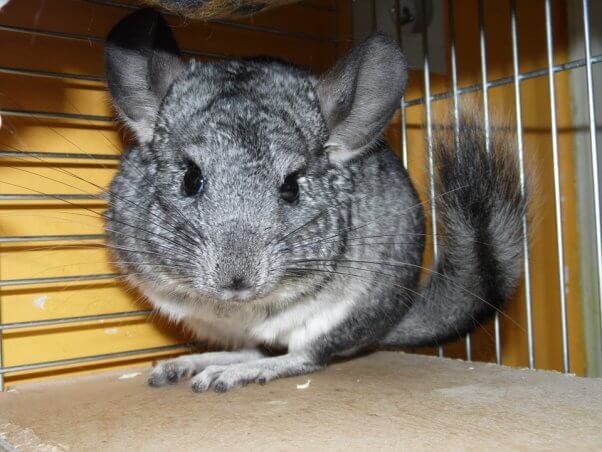
In Chinchillas: A Guide to Caring for Your Chinchilla, author Donna Anastasi advises against keeping these animals as classroom pets: “[I]t is hard to imagine a worse environment for chinchillas! During the day, they need a quiet, calm home to sleep in, and in the evening, gentle and consistent care from one or a few individuals they’ve come to know and trust. Daytime activity, yelling youngsters, and poking fingers all add up to one very stressed-out chinchilla.“
PETA has come across cases in which chinchillas became highly stressed as a result of classroom circumstances, lost their fur, and triggered allergies in students—leading teachers to give them away.
Sugar Gliders
Many people who buy sugar gliders on a whim come to realize that their home is simply an unsuitable environment for this type of animal—so imagine how much more unsuitable a classroom full of children is. When kept as “pets,” these tiny nocturnal tree dwellers are denied everything that’s natural and meaningful to them: the companionship of their own species, fresh air, the outdoors, and the opportunity to climb or do almost anything other than pacing or sitting and peering out of a tiny cage.

They’re nocturnal animals, yet they’re commonly subjected to bright lights and loud noises during daylight hours, which can make sleeping difficult for them (and in a classroom, this would inevitably be the case). They are naturally tree dwellers, so they have sharp claws for climbing and grasping, which can make it uncomfortable or even painful for humans to hold them in their bare hands (and scratching is very common). Sugar gliders also have sharp teeth and can bite if they feel scared or threatened. They’re very social animals in the wild, spending their lives frolicking with their group (they normally live in colonies of 30) and foraging for sap and insects. If they are not given enough attention, they may self-mutilate or die from the stress of loneliness.
In the international pet trade, sugar gliders are bred in hellish facilities similar to puppy mills, where they’re treated as nothing more than products. Untold numbers of these and other small animals are stuffed into tiny containers (sometimes even plastic water bottles) and shipped all over the world to be sold to consumers. Furthermore, exotic animals such as sugar gliders pose health risks to humans and native wildlife if abandoned to fend for themselves. They can transmit the pathogens that cause salmonellosis, giardiasis, leptospirosis, toxoplasmosis, and ringworm, to name a few. For all these reasons, Alaska, California, Hawaii, and Massachusetts as well as municipalities like Fairfax County, Maryland; Salt Lake County, Utah; and St. Paul, Minnesota prohibit keeping them.
Whether a fuzzy mammal, a cold-blooded reptile, or a fish in a tank, animals suffer in classrooms and are at risk of neglect and abuse—and buying any animal supports the cruel and hideous pet trade.
Need more information? Find out why no animal should ever be forced to be a classroom “pet”:


